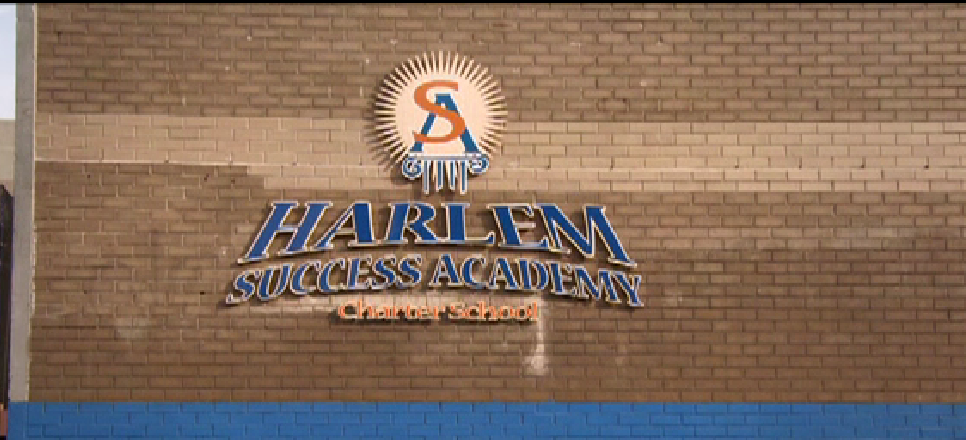The 2010 release of the film The Lottery, directed by Madeleine Sackler, documents the lives of four families living in New York City who hope to get the winning ticket to educational success for their children via the Harlem Success Academy. The filmmaker started documenting the families’ lives two months prior to the lottery leading up to the draw, which determined the fate of their futures.

The quality of education is a hot topic for parents, teachers, and politicians alike because the existing system is said to not provide students with the necessary tools to succeed. The widening achievement gap between African American and Latino students and their white counterparts is gaining more attention. There is a lot of pressure on people in the education sector to find the most effective solutions to stop the growing problem once and for all. Sackler highlights the growing interest in parent choice as the education reform effort to close the achievement gap and provide better educational opportunities for students overall.
Although there are a number of different school lotteries (example magnet school lotteries) Sackler focuses on a charter school. Charter schools are receiving a lot of attention; there are a great number of advocates such as President Obama and non-supporters of the movement. Geoffrey Canada, President and CEO of the Harlem Success Academy, explains that charter schools are similar to traditional public schools because they receive public dollars. However, they are different because they are not burdened by the constraints brought on by teachers’ union in traditional public schools. The number one priority is in the interest of the children being served and not of the teachers (The Lottery 08:09- 08:49). Without the constraints of attendance boundaries and its perceived success, the Harlem Success Academy is becoming the most sought after school in New York City for people looking for the best education that money does not have to buy. In addition to the lack of teachers unions, charter schools provide longer school days and school years for students to receive the appropriate amount of instruction to ensure success.

The filmmakers took an interesting approach by focusing the story of the lottery process around four African American families with students entering the kindergarten who believed that compared to their zoned school, the Harlem Success Academy would provide the necessary resources for their children to succeed. The families prided themselves in being active in their children’s education but also knew that their efforts alone would not be enough.
The decision to include families in the film whose students were entering kindergarten subtly imply that the fate of students’ success in school and beyond is determined in his or her early years of education. Many critics, including William Tate from Washington University, feel that film does not provide solid statistics on the performance of the students who attend Harlem Success Academy, but instead just highlight parents who feel like it is their child’s only hope to a bright future (Review of “The Lottery”). Is the Harlem Success Academy truly successful? How are the successes calculated? The filmmaker should have explored these questions more to give viewers a more holistic view of the project.
Despite the Harlem Success Academy’s advocates declarations of success in their schools, not everyone favors them. One of the most crucial scenes in the movie highlights parents and community members voicing the opinions about not allowing the Harlem Success Academy to take over the building of a zone school that was being closed due to poor performance.

This is one of the few moments in the film where viewers are not solely listening to people who are in favor of charter schools. Viewers can see the raw emotions felt by the parents and community members involved as they rallied against the expansion of Harlem Success Academy. The charter school advocates feel that their opposition has misconceptions about their efforts. Throughout the public forum, Harlem Success’s advocates tried to stress their successes without fully backing up their statements with hard data. After the forum, the Department of Education’s decided not to allow Harlem Success Academy to move into the new school building.
Another crucial scene is lottery day where the fates of the four children were revealed. Two of the four children enrolled in their zone schools while the other two were lucky enough to receive spots at Harlem Success Academy while the other two children had to enroll in their zone schools because they did not have any other options.

Although the lottery process is not full proof as seen in the film, the filmmaker’s ultimate goal was to drive the parent choice initiative as the next best solution to the education crisis. Charter school advocates will see this film as a great way to support their efforts in the charter movement while others who are have not bought into to the charter school movement will continue to question their effectiveness due to lack of data. All in all this film made a bold statement and should be seen by anyone who is interested in education reform efforts alike.
Works Cited:
Sackler, Madeleine. The Lottery. Video documentary, 2010.
Tate, William. Review of “The Lottery.” Boulder, CO: National Education Policy Center. 2011. Retrieved February 24, 2013 from http://nepc.colorado.edu/thinktank/review-lottery.
Victoria,
I really enjoyed your analysis especially because the film you analyzed was similar to the film I had analyzed, Waiting for “Superman”. Throughout my film, the emphasis on charter schools being the best alternative to public school was apparent like yours and even included the a story of a child with hopes of attending Harlem Success Academy.
Similarly, the film also followed the fates of five children applying to charter schools and the results of each child. Each lottery was filmed for each child, and the scenes were also counting down the slots left open as each spot was being filled building the same tension felt by families to the audience. This really put into perspective the pressure of children and their parents wanting the best education for them as much as possible for me, and it also demonstrated the sad reality that not all will have that opportunity to do so. I was really happy to see that you included those final scenes in your analysis although it was a different film. I really enjoyed your interpretation of the film and overall great job!
-V. Armendariz
It is quite interesting to see the drastic differences between this film compared to « American Teacher » in respect to advocating charter schools, while « American Teacher » emphasized the need to improve public schools and gave off the impression that charter schools were actually detrimental to education and society. The filmmakers of « American Teacher » argued that public schools are a fundamental component of a strong democracy and that the privitazation of public schools is detrimental for our country and youth. I also find it interesting that « The Lottery » attributes the problems of public schools to the teacher unions, while « American Teacher » essentially emphasized that teacher unions are necessary due to the poor working conditions for teachers and low teaching salaries. « The Lottery » also emphasized the importance of families’ involvement it appears as opposed to « American Teacher, » which completely disregarded this essential component of a child’s education.
I thoroughly enjoyed reading this essay, because it did give an alternate perspective on school reform and showed how charter schools provide longer school days and school years, which I was not aware was the case. I also found it somewhat entertaining that both films included a commentary from President Obama—however, in different contexts. The way « American Teacher » featured President Obama’s statement made it appear as though he was in favor of improving the conditions of the public schools, while this essay made it evident that President Obama is actually in favor of charter schools and is a strong advocate for them. Lastly, in « American Teacher, » the film presented you with a teacher by the name of Rhena Jasey, who ultimately had to leave the public school she was working at to work at a charter school, which offered her a starting salary of $125,000. By including this segment in the film, it gave off the impression that the charter schools were taking all of the good teachers away from the public schools and putting them into the charter schools, further increasing the achievement gap between children in urban districts compared to those of suburban areas. Great essay, Victoria !
This film appears to have many similarities to the one I viewed, Waiting for “Superman”. Both films documented select students and their families for a period of time before they entered a lottery for a charter school. Both films also strongly alluded to the fact that charter schools are the best option for many students, particularly in urban areas. Finally, both films show the feeling of relief and rejoice when a student gains admission to the school of their choice, as well as the pain and despair of a student who does not.
A way that our films differ is that “The Lottery” appears to focus specifically on the advantages of charter schooling, while “Waiting for ‘Superman'” focused mostly on the inefficiencies of modern day public schools.
I enjoyed reading your essay, Victoria!
Caroline
This video analysis offers several insights into the most powerful scenes in The Lottery and also draws on criticism from William Tate’s questioning of whether most charter schools are as successful as the film portrays them to be.